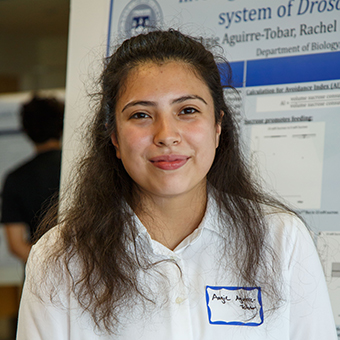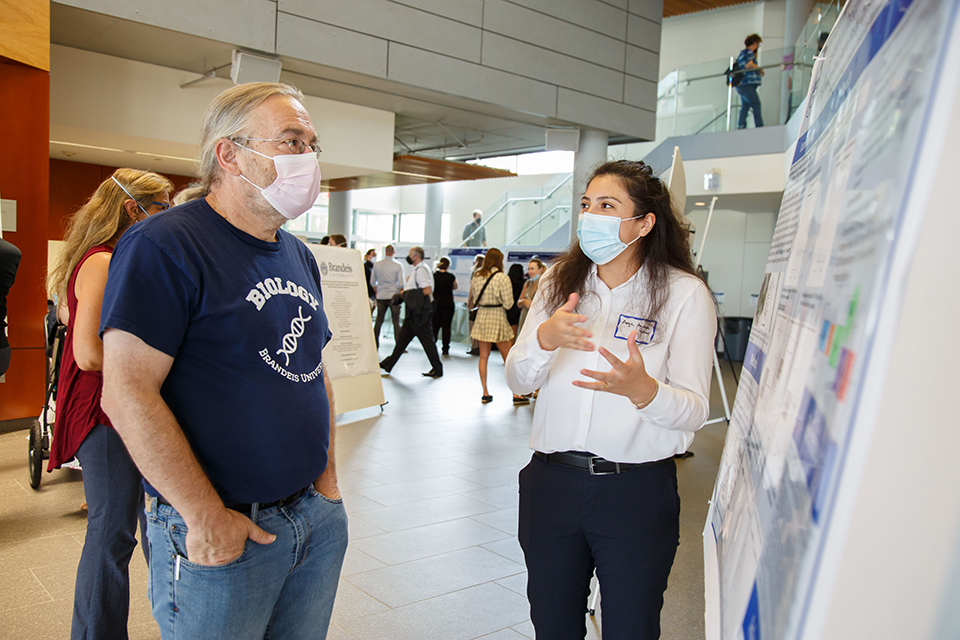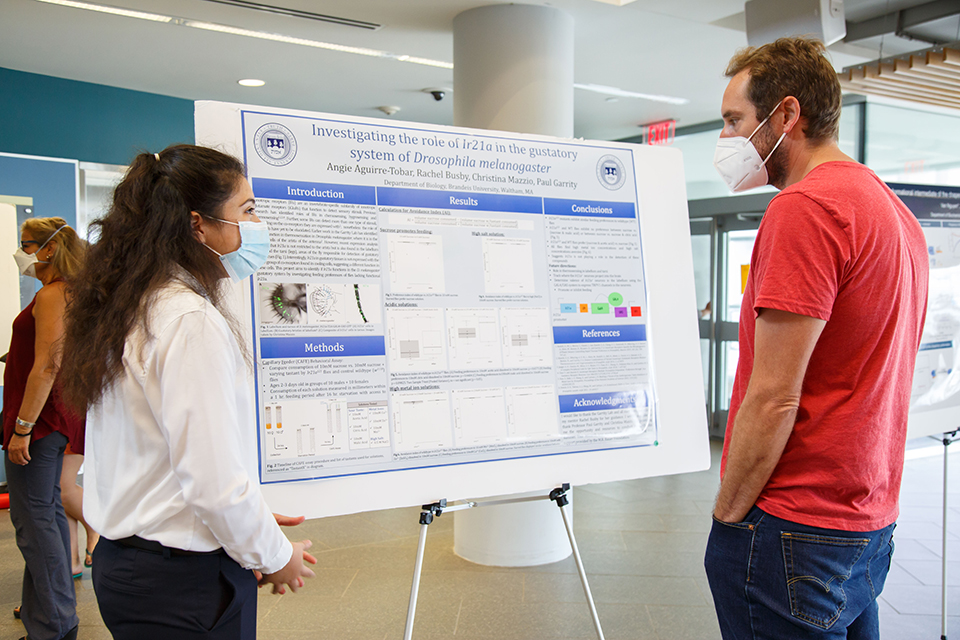Angie Aguirre-Tobar
Garrity Lab
Department of Biology
Brandeis University
Investigating the Role of Ir21a in the Gustatory System of Drosophila Melanogaster
 Ionotropic receptors (IRs) are an invertebrate-specific subfamily of ionotropic glutamate receptors (iGluRs) that function to detect sensory stimuli in neurons. IRs are heteromeric ion-gated channels structured with other broadly expressed co-receptor subunits and "stimulus-specific" subunits. Previous research has identified roles of IRs in chemosensing, hygrosensing and thermosensing, and while functions of some subunits have been uncovered, the roles of many IRs are yet to be elucidated.
Ionotropic receptors (IRs) are an invertebrate-specific subfamily of ionotropic glutamate receptors (iGluRs) that function to detect sensory stimuli in neurons. IRs are heteromeric ion-gated channels structured with other broadly expressed co-receptor subunits and "stimulus-specific" subunits. Previous research has identified roles of IRs in chemosensing, hygrosensing and thermosensing, and while functions of some subunits have been uncovered, the roles of many IRs are yet to be elucidated.
However, even for previously described stimulus-specific subunits, research suggests that their physiological roles may not be so constrained. For instance, our lab identified Ir21a as a required receptor for temperature detection in Drosophila melanogaster, alongside co-receptors Ir25a and Ir93a in the arista of the antenna. More recent expression analysis showed that Ir21a is not restricted to the arista, but also found in the labellum (lips) and the tarsi (legs); external organs that contribute to the gustatory (taste) system of the fly. Interestingly, Ir21a in gustatory tissues is not expressed with the same group of co-receptors found in cooling cells of the arista, suggesting a different function in these cells.
However, the expression pattern for Ir21a in the labellum does not match characterized patterns of taste responsive neurons for sweet and bitter taste. Studies have implicated Ir25a, a co-receptor of Ir21a in cooling cells, to function in the detection of sour taste and high metal ion concentration. The investigation of this project aims to identify if Ir21a+ cells in the labellum respond to these tastants, along with high salt solutions. For this project, I utilized the Capillary Feeder Assay (CAFE) as a quantitative measure of D.melanogaster feeding preference. I compared wildtype and Ir21a mutant flies' consumption of metal ions, acids, and high salt concentration in sucrose to characterize their detection of each tastant. I found that Ir21a is not required for the detection of high metal nor high salt concentrations. Future experiments are needed to determine where Ir21a+ neurons project in the brain, as well as identify the valence of these neurons to further elucidate the function of Ir21a in these cells.
Personal Statement
Having the opportunity to perform research at Brandeis this summer has taught me more ways to define success than exclusively through making discoveries with my results. Working in the Garrity lab provided me with insight into neurobiology research and encouraged me to be resilient in the field of science. I was invited into a small and reliable community that nourished strong collaboration, effective communication, and broadened my knowledge of neurogenetics in Drosophila melanogaster. I was able to build productive connections with the lab members, and their support helped me become resilient against every challenge and encouraged me to investigate any questions I had, a quality I will continue to value in any future professional field I pursue.
As a Latina first-generation student, it is difficult finding support systems that understand and empathize with the struggles and experiences I have. Often, I have felt that I am put on a pedestal and am competing for acceptance and recognition in science by overperforming. Because of this, I end up putting a lot of pressure on myself and am less forgiving of mistakes I make as a scientist. However, working in this lab, I came to acknowledge successes in the progress of my experimentation and data collection, even when there is no definitive conclusion to my results. Becoming comfortable in the uncomfortable has become my new determinant for success, and if it were not for the support of the M.R. Bauer Foundation Fellowship, the trust of Professor Paul Garrity, and guidance from Rachel Busby, I would not have had this opportunity to experience this growth as a scientist.
Giving Back Reflection
Throughout the summer, on weekends when I was able to, I would go to the local garden at the Lemberg Child Center and help harvest the ripe fruits and vegetables and maintain the overall health of the garden. I would also volunteer to assist with some of the landscaping and maintenance of the garden. Most of the harvest was for the children for the following week, but sometimes if there were extras I would also get to taste some of the fresh produce.

